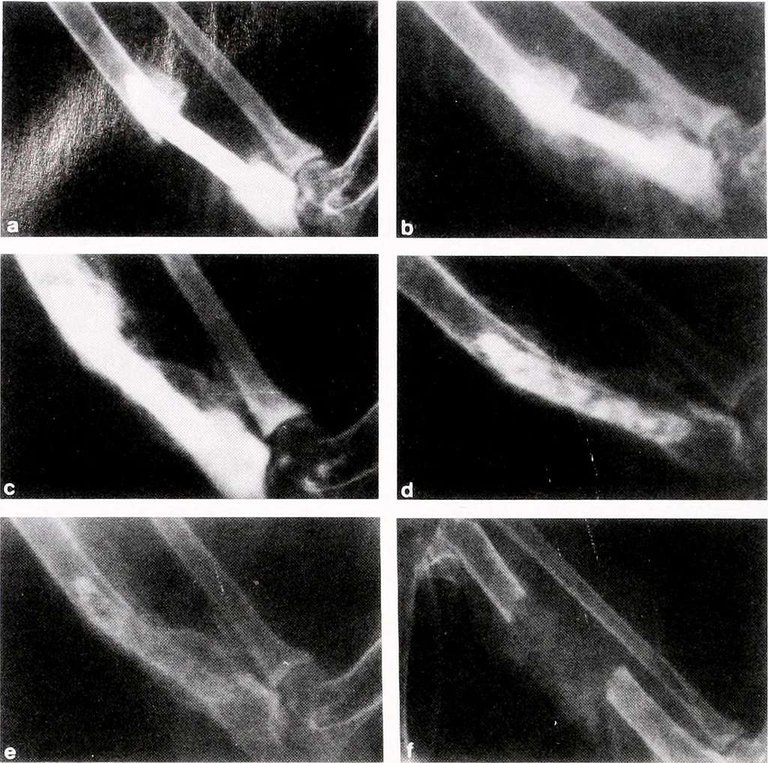Diet and Bone Health; The Case of Black Tea and Skeletal Fluorosis
Today's post is looking at diet and bone health, so with that said, let's begin. I can imagine you are wondering what type of introduction that is, well I am just tired to give any type of introduction and I thought that would be enough introduction for a post that has to do with a person having an excessive 100 to 150 tea bags to become a pitcher taken every day. That is excessive, and I must say that I cannot give that a try even if there was a bet on it for 1 million dollars. "Maybe I would" - thinking out loud.
This is the case of a 47 year old woman who was admitted at the Henry Ford Hospital in Detroit, and was wheeled in to have an X-ray after she had complained of back, legs, and hip pain amongst other pains she mentioned that made it look like her entire body was on fire. Not to mention that over the last few years, her teeth were becoming brittle and they broke at every little impact including a simple touch which led her to remove her entire teeth.

After the X-ray, it was found that the membranes of her bones between her spine and legs showed calcification (sudden hardening of the soft outside parts of her bones). The doctor also said she showed signs of Rugger Jersey Spine, and the doctor was forced to ask her about her diet and lifestyle habit, she made it clear that she had been drinking a pitcher of black tea which was made using within 100 to 150 bags of tea daily for the past 17 years. I can imagine the look on the doctor's face, if I were the one my jaws would drop and would need help to put it black in place. But we cannot judge that her condition could be caused by the tea she drank, let's not forget that with health related to diets, other things could be the cause including the water she drank or something else.
The doctors feared the dense region in her spine could be cancer and decided to send her to an endocrinologist that specialized in bones. When the result got to doctor Rao, he immediately identified the condition which was Skeletal Fluorosis. A person can have either Dental or Skeletal Fluorosis which is when there is excessive fluoride in the body. With Dental Fluorosis, the patient can be diagnosed when there is staining and pitting of the teeth which can lead to the damaging of the enamel in severe cases. Skeletal fluorosis on the other hand deals with fluoride building up in the bones leading to stiffness of the joints and pain in the joints but in severe cases, it can lead to the calcification of the ligaments, and changing of the bone structure and this can cause the person to be paralyzed, and the bones brittle or in dare cases brittle skull.
For this woman, she had too much fluoride in her system so how did it get there? Flouride is found in a lot of things including the water we drink, our toothpaste, and so many other things. Dentists say that in the late 1970s middle class Americans didn't keep their teeth till their age of 60 years but today, people in their 80s have their complete denture thanks to mass fluoridation but you see, while fluoride has helped them keep their teeth for a very long time, it can also be dangerous as you have read in this post but then it all falls back to dosage.

Children are susceptible to fluoride poisoning when they consume too much fluoride too quickly. Fluoride poisoning comes with vomiting, salivation, muscle spasm, and seizures. According to Howard Pollick, Water systems are operated by professionals. With the new equipment, they can control the fluoride level within a very narrow range saying that it is safe for public health. But then, there will be some people in the population that are sensitive to fluoridation so they can be negatively affected.
In the case of this patient, black tea is a common catalyst for skeletal fluorosis and when the woman's fluoride level was checked, it was 4X more than the normal level of fluoride in a healthy person. Since the liver removes very little amount of fluoride, then the fluoride enters the blood stream at a large amount.
According to Cathy Hester Seckman, the plant specie Camelia Sinensis where most teas come from are fluoride hyperaccumulators and since this plant contain lots of fluoride, taking them can give one the total amount of fluoride needed, also the older the plant, the more fluoride it has accumulated. After her encounter at the hospital with the doctors, she stopped taking her tea, and her condition improved, also she was given teriparatide which is a medication hormone for bone formation.
As we reflect on this compelling narrative, let it serve as a poignant reminder of the intricate interplay between diet and health - a nexus fraught with profound implications for our well-being and vitality. Let us tread mindfully, armed with knowledge and awareness, as we navigate the labyrinthine terrain of dietary choices and their enduring impact on our lives. At the end of it all dosage is important when we eat.
Reference
https://www.cbsnews.com/news/womans-150-tea-bag-per-day-habit-lead-to-bone-disease-her-doctors-say/
https://www.nejm.org/doi/full/10.1056/NEJMicm1200995
https://www.aimu.us/fluorosis
https://www.theatlantic.com/magazine/archive/2020/04/why-fluoride-water/606784/
https://ajph.aphapublications.org/doi/pdf/10.2105/AJPH.47.5.539
https://www.rdhmag.com/patient-care/patient-education/article/14033922/hidden-fluoride-in-tea-and-other-foods-and-beverages
https://www.cdc.gov/fluoridation/basics/index.htm
https://www.ncbi.nlm.nih.gov/pmc/articles/PMC4808922/
Image 1 || Flickr || Marco Verch || English Breakfast tea bags, dry tea background
Image 2 || Getarchive || The Biological bulletin
Thanks for your contribution to the STEMsocial community. Feel free to join us on discord to get to know the rest of us!
Please consider delegating to the @stemsocial account (85% of the curation rewards are returned).
You may also include @stemsocial as a beneficiary of the rewards of this post to get a stronger support.